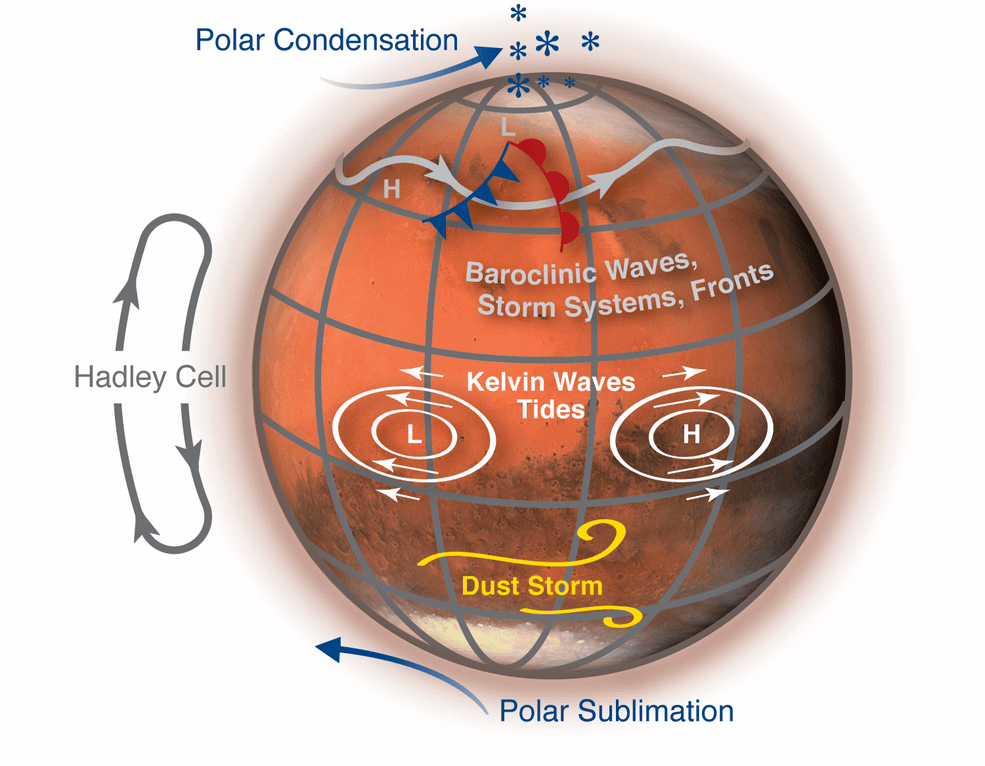Circulation Systems
Wind systems ranging in scale from global to local control the movement of heat, momentum, trace gases, and aerosols through the atmosphere.
The general circulation of Mars consists of a set of interacting, global-scale wind systems including the mean meridional circulation, stationary and transient eddies, thermal tides, and mass condensation flow. Though the definition of these is somewhat arbitrary, it provides a convenient way to analyze, diagnose, and understand the general circulation and its transport characteristics.
Local- and regional-scale circulations include flows such as slope winds, katabatic winds, crater circulations, canyon breezes, and other small-scale topographically or thermally forced circulations that are typically not resolved in Global Climate Models.
Further details regarding the components of the general circulation are given in the link below. We use the NASA Ames Mars GCM to address several questions relating to circulation systems over a range of scales and regions. Click the links below to learn about our current projects.





























